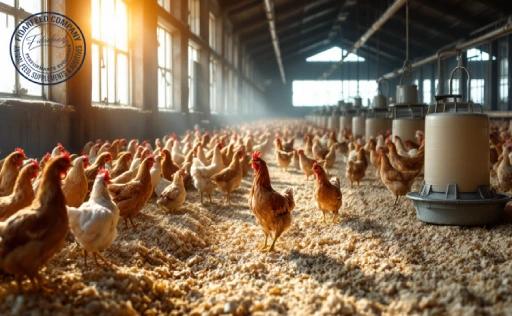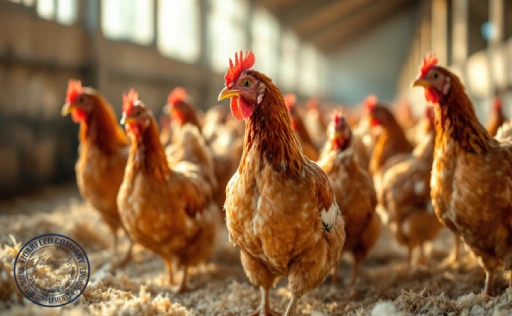Sheep farming is an exciting and rewarding venture, offering the potential for long-term financial gains and sustainable farming practices. Whether you’re a novice interested in starting your first flock or an experienced breeder seeking ways to expand, this guide will provide valuable insights on how to successfully raise sheep. From selecting the right breed to managing care and marketing your products, this comprehensive guide is designed to help you build a thriving sheep farming business. Keep reading to explore essential aspects of sheep farming that will ensure your success.
Why Sheep Farming Is a Rewarding Venture for Beginners
Starting a sheep farm is an excellent way to enter the agricultural industry for both beginners and seasoned farmers. There are numerous benefits, including the ability to diversify your income, the ease of managing smaller herds, and the opportunity to contribute to sustainable food production.
Learn more about: Processed Meat Meal
Sheep farming offers a variety of income streams, such as selling wool, lamb meat, and even breeding stock. Additionally, sheep are relatively low-maintenance compared to other livestock, making them an attractive option for first-time farmers. With proper management, sheep farming can become a profitable and sustainable business. The demand for both high-quality wool and meat ensures that there’s always a market for your products, giving you a steady revenue stream throughout the year.
Moreover, raising sheep can contribute to land sustainability by grazing on pastures that need natural management, helping control weeds and promote soil health. In regions with fertile land, sheep can thrive with minimal input, making it an environmentally friendly farming practice.
The Basics of Sheep Farming: What Every Beginner Needs to Know
Before diving into sheep farming, it’s crucial to have a solid understanding of the basics. The first step is to determine your farming goals. Do you want to focus on meat production, wool harvesting, or milk production? Identifying your objectives will help guide decisions regarding the breed, size of the flock, and overall farming setup.
Learn more about: Dorper Sheep Farming: Producing High-Quality Meat for Maximum Profit
Sheep farming involves both technical knowledge and practical experience. You’ll need to become familiar with the anatomy and behavior of sheep, understand the basics of pasture management, and learn how to monitor the health of your flock. Knowledge of animal welfare and biosecurity practices is also essential to prevent disease outbreaks and ensure the well-being of your animals.
Additionally, understanding the seasonal needs of sheep, including nutrition and shelter during different weather conditions, is key to successful farming. For instance, sheep need adequate grazing during warmer months and shelter or additional feed during winter.
Choosing the Right Sheep Breed for Your Farm
Selecting the right breed of sheep is crucial for your farming success. Sheep breeds are generally categorized into three main types: meat, wool, and dual-purpose breeds. Depending on your goals, you can choose a breed that best suits your needs.
For meat production, breeds like the Suffolk, Texel, or Dorset are popular due to their high-quality meat and rapid growth rates. If wool is your primary focus, Merino, Romney, or Corriedale are known for their fine wool and high yield. Dual-purpose breeds like Cheviot, Polypay, or Katahdin provide both wool and meat, making them ideal for small-scale or diversified farms.
Learn more about: How to Control Internal Parasites in Sheep: Best Practices
The climate of your region plays a role in breed selection as well. Some breeds are better suited for harsh, cold climates, while others do well in warmer regions. Researching your local environment and understanding the hardiness of various breeds will help ensure your sheep thrive.
Setting Up Your Sheep Farm: A Step-by-Step Guide
When setting up your sheep farm, there are several key infrastructure elements to consider. Let’s break them down into manageable steps:
-
Fencing: Sheep require strong, secure fencing to keep them contained. Fences should be at least 4-5 feet high and built with sturdy materials like wire or wood. Sheep are natural grazers, so a good fence will prevent them from wandering off your property.
-
Shelter: While sheep are hardy animals, they still need shelter from extreme weather. Depending on your location, you can either build a basic barn or provide windbreaks and shade for the flock. It’s important to ensure the shelter has proper ventilation, clean bedding, and enough space for all the sheep.
-
Pasture: Sheep require access to good-quality pasture to graze. Ideally, your farm should have a rotation system in place to prevent overgrazing and ensure that grass remains healthy. Offering a variety of grasses and legumes can provide your sheep with a balanced diet.
-
Water and Feed: Fresh, clean water should always be available. Additionally, supplementing their diet with nutritious feed, especially during colder months, is essential to maintain their health and productivity.
-
Storage: Store hay, feed, and other supplies in a dry, cool place to prevent spoilage.
Essential Sheep Care: Feeding, Grooming, and Health Management
Sheep care revolves around maintaining their health and well-being. Here’s what every sheep farmer needs to know about essential sheep care:
-
Feeding: A balanced diet is critical for sheep. In addition to grazing, provide them with hay or silage, especially in winter months when pasture quality decreases. Sheep also benefit from mineral supplements to ensure they receive adequate nutrients, particularly during pregnancy or lactation.
-
Grooming: Regular grooming is necessary to keep your sheep healthy and free of parasites. Sheep with long wool, such as Merino sheep, need shearing once a year. Regular hoof trimming is also important for their comfort and mobility.
Learn more about: How to Treat Ringworm in Sheep and Lambs: A Complete Guide
-
Health Management: Regularly check your flock for signs of illness, such as coughing, lameness, or abnormal behavior. Vaccinations and deworming schedules should be followed to prevent disease outbreaks. Consulting a veterinarian is key to addressing any medical concerns.
How to Manage Breeding and Reproduction in Sheep
Breeding sheep requires careful planning to ensure a healthy and productive flock. Ewes should be bred at the right age—typically around 1 year old—and should be healthy and in good body condition. Rams should also be assessed for fertility before breeding season.
Learn more about: The Essential Guide: How Do Sheep Help Farmers?
Timing is crucial for lambing, and it’s essential to provide adequate care during this period. Consider the use of controlled breeding programs to optimize lambing, ensuring that ewes are bred when pasture is plentiful to provide them with ample nutrition. Additionally, maintain a clean, quiet area for lambing to reduce stress and complications.
Common Challenges in Sheep Farming and How to Overcome Them
Like any farming venture, sheep farming comes with its own set of challenges. Some common problems include:
-
Predation: Sheep are vulnerable to predators like foxes, dogs, and birds of prey. Installing proper fencing and using guard animals, such as Maremma dogs, can help protect your flock.
-
Health Issues: Parasites, foot rot, and respiratory diseases are some of the common health issues that affect sheep. Regular veterinary check-ups and good farm hygiene can reduce the risk of outbreaks.
Learn more about: The Complete Guide: How to Run a Successful Sheep Farm
-
Lambing Complications: Improper care during lambing can lead to complications like dystocia (difficult birth). Provide a quiet, clean environment and monitor ewes closely during the lambing process.
Marketing Your Sheep Products: From Wool to Meat
Once your sheep are healthy and productive, it’s time to focus on marketing your products. Depending on your farm’s goals, you can sell wool, meat, or live sheep. Many farmers focus on niche markets, such as organic or grass-fed lamb, to attract premium prices.
Learn more about: The Complete Guide to Sheep Farming for Beginners
Selling wool can be profitable if you produce high-quality fleece, while lamb meat is in demand for its flavor and tenderness. You may also consider selling breeding stock to other farmers looking to improve their flocks.
Final Thoughts: How to Build a Sustainable and Profitable Sheep Farm
Sheep farming offers numerous rewards, both financially and personally. By starting small, educating yourself on the basics, and staying committed to animal welfare and sustainable practices, you can build a thriving sheep farm that supports both you and your community. Patience, dedication, and hard work are key to long-term success in sheep farming.
By following the steps outlined in this comprehensive guide, you’ll be well on your way to becoming a successful sheep farmer. The journey may have challenges, but the rewards are well worth the effort.













